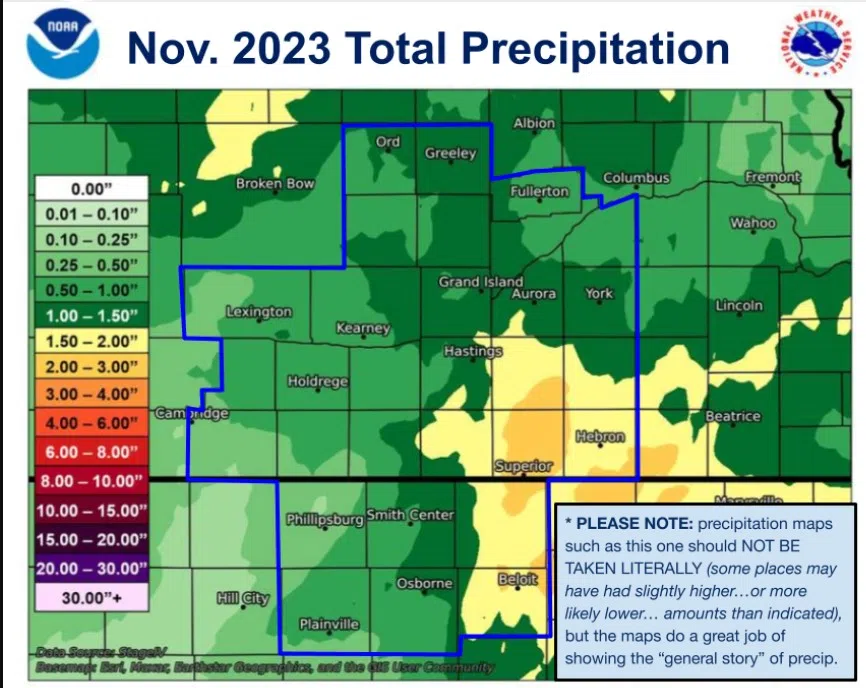
National Weather Service - Hastings, Courtesy.
HASTINGS — With the penultimate month in the books, the National Weather Service – Hastings has released the 2023 November precipitation summary. The amounts were the highest southeast of the Tri-Cities.
Per NWS Hastings, most of their coverage area received around 0.50 – 1.10 inches of rain or snow, with higher amounts in the southeastern counties, the least being in the far west and northeast.
The areas with the highest precipitation were in NWS Hastings Kansas counties, with Beloit, Kan., receiving 1.87 inches, while Superior recorded 1.62 inches, Riverton, 1.50 inches and Nora, 1.43 inches.
The communities with the lowest precipitation amounts were Beaver City, 0.20 inches, Osceola, 0.21 inches and Elwood 0.28 inches.
The Tri City airports recorded the following:
- Grand Island: 0.79 inches, 72 percent of normal, 59th wettest on record and wettest since 2020.
- Hastings: 0.85 inches, 75 percent of normal, 57th wettest on record and wettest since 2020.
- Kearney 0.49 inches, 49 percent of normal, 60th driest on record, but wettest since 2020.
For reference, normal November precipitation across the region is 0.80 – 1.30 inches, lower in the west and higher in the east, per NWS Hastings.
The most serious drought condition, exceptional or D4, remains in place east of the Tri-Cities and includes Hall, Adams, Hamilton, Merrick, Nance, Polk, York, Seward and Butler counties.
The U.S. Drought Monitor made no changes to conditions across Nebraska from last week.
With the dry conditions and ongoing drought, wildfires throughout the winter and into the spring remain an issue, with near critical fire weather days popping up when relative humidity is low enough and winds are stronger.
“Wildfires are worsening by a number of different metrics in a changing climate. The amount of forest burned in the Western U.S. has increased since the mid- to late-20th century, in part due to higher rates of evapotranspiration and warmer temperatures,” per the National Integrated Drought Information System (NIDIS).


